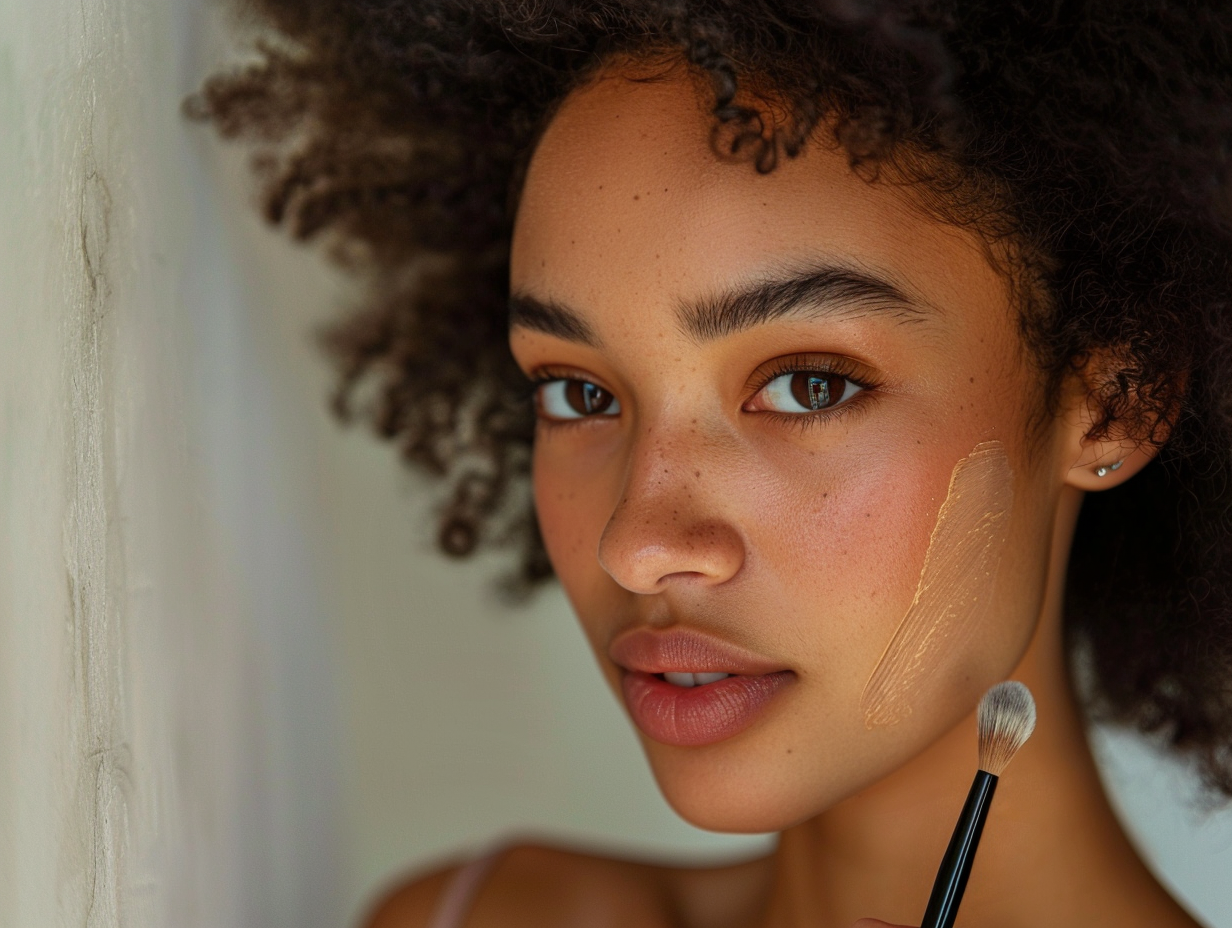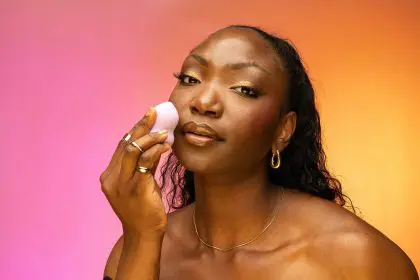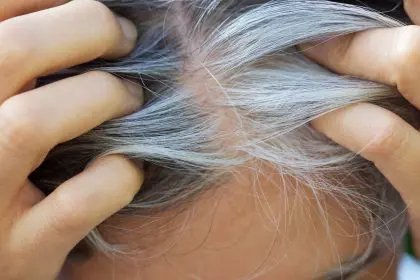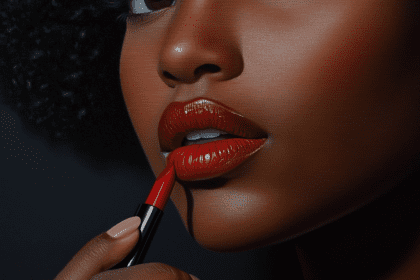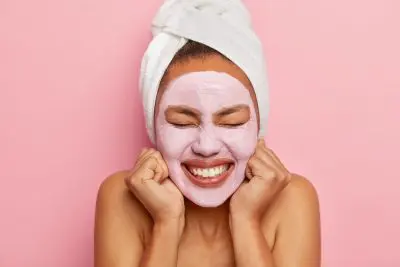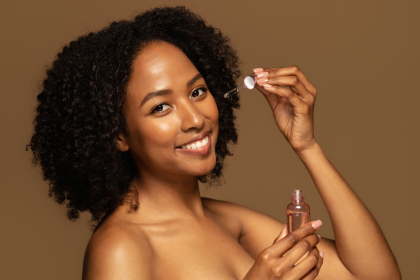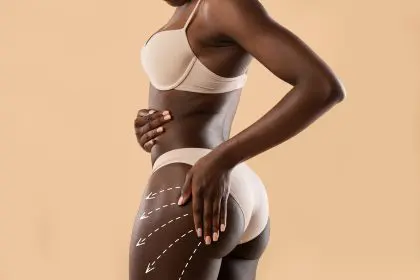You’ve probably been matching foundation to your hand or wrist your entire life, wondering why it never looks quite right on your face. Meanwhile, professional makeup artists have been using a completely different rule that ensures perfect color matches every single time — and it’s surprisingly simple once you know the secret.
This foundation shade rule that makeup artists use eliminates the guesswork and gives you flawless, natural-looking coverage that actually matches your skin.
The jawline rule changes everything
Professional makeup artists always match foundation to the jawline, not the hand, wrist, or face. Your jawline provides the most accurate representation of your true skin tone because it’s where your facial skin meets your neck, creating the perfect transition zone.
This area shows your skin’s natural color without the influence of facial flushing, sun exposure differences, or the varied undertones that can appear on different parts of your face. It’s essentially your skin’s baseline color that foundation needs to match.
When you match foundation to your jawline, you ensure seamless blending between your face and neck, eliminating the dreaded foundation line that makes makeup look obvious and artificial.
Why other matching methods fail
Matching foundation to your hand or wrist is unreliable because these areas often have different undertones and sun exposure than your face. Your hands typically have more yellow or olive undertones, while your face might be more pink or neutral.
Testing foundation on your cheek or forehead can be misleading because these areas may have redness, discoloration, or different undertones that don’t represent your overall skin tone. You might end up with foundation that looks perfect on one area but clashes with the rest of your face.
The back of your hand, a common testing spot, is usually lighter than your face and has completely different undertones, leading to foundation that looks ashy or doesn’t blend well with your neck.
How to apply the jawline rule
Apply three different foundation shades along your jawline in natural lighting. Use shades that are close to what you think might match — one slightly lighter, one darker, and one that seems about right.
Blend each shade slightly and observe which one literally disappears into your skin. The correct shade will blend seamlessly without leaving a visible line or looking obviously different from your natural skin tone.
Test in natural daylight whenever possible, as artificial lighting can drastically change how foundation appears on your skin. Step outside or near a window for the most accurate assessment.
The undertone factor
While matching depth is important, undertones are equally crucial. Your foundation needs to have the same undertone as your skin — warm, cool, or neutral — to look natural.
Even if the depth seems right, wrong undertones will make foundation look muddy, ashy, or artificially bright on your skin. Pay attention to whether the foundation looks harmonious with your natural skin tone or seems to fight against it.
If a foundation disappears on your jawline but looks slightly off, try the same depth in a different undertone. Many brands offer warm, cool, and neutral versions of the same shade depth.
Professional blending technique
Once you’ve found your perfect match using the jawline rule, blend foundation outward from the center of your face toward your jawline and hairline. This ensures even coverage that transitions naturally into your neck and hairline.
Use a damp beauty sponge or brush to blend the foundation seamlessly at your jawline, ensuring no harsh lines or color differences. The goal is for your foundation to enhance your natural skin, not create a mask-like appearance.
Seasonal adjustments
Your skin tone can change slightly with the seasons, so the foundation shade rule that makeup artists use includes periodic reassessment. You might need a slightly lighter shade in winter when you have less sun exposure, and a slightly deeper shade in summer.
Don’t assume the same foundation will work year-round. Professional makeup artists often have multiple shades for clients to account for these natural variations in skin tone.
The two-shade system
Many makeup artists use two foundation shades — one that matches perfectly and one that’s slightly lighter or darker for contouring and highlighting. This creates more dimension and natural-looking coverage.
Your perfect jawline match becomes your base shade, while a slightly lighter version can brighten under-eye areas and highlight the center of your face.
Common mistakes to avoid
Don’t test foundation on your palm or the back of your hand — these areas have different undertones and are often lighter than your face. Avoid testing multiple shades on your face simultaneously, as this can create confusion about which shade actually matches.
Don’t choose foundation in poor lighting conditions. Fluorescent lights, yellow indoor lighting, and dim conditions can all make colors appear different than they actually are.
Avoid going too light in an attempt to brighten your complexion. Foundation should match your natural skin tone, not change it dramatically.
When to seek professional help
If you’re still struggling to find the right match using the jawline rule, consider getting color-matched at a makeup counter. Professional makeup artists can assess your skin tone objectively and recommend the best shade and undertone for your complexion.
Many brands offer complimentary color-matching services that use the same jawline rule professionals rely on. Take advantage of these services, especially when trying new brands or formulations.
The confidence factor
When your foundation matches perfectly using this professional rule, your makeup looks natural and effortless. You’ll feel more confident knowing your base makeup enhances rather than masks your natural beauty.
Perfect foundation matching creates a smooth canvas for the rest of your makeup while maintaining a natural, skin-like appearance that doesn’t look obviously applied.
Bottom line? The foundation shade rule that makeup artists use is simple: always match to your jawline in natural lighting. This professional secret ensures your foundation blends seamlessly with your natural skin tone, creating flawless coverage that looks like enhanced skin rather than obvious makeup.

